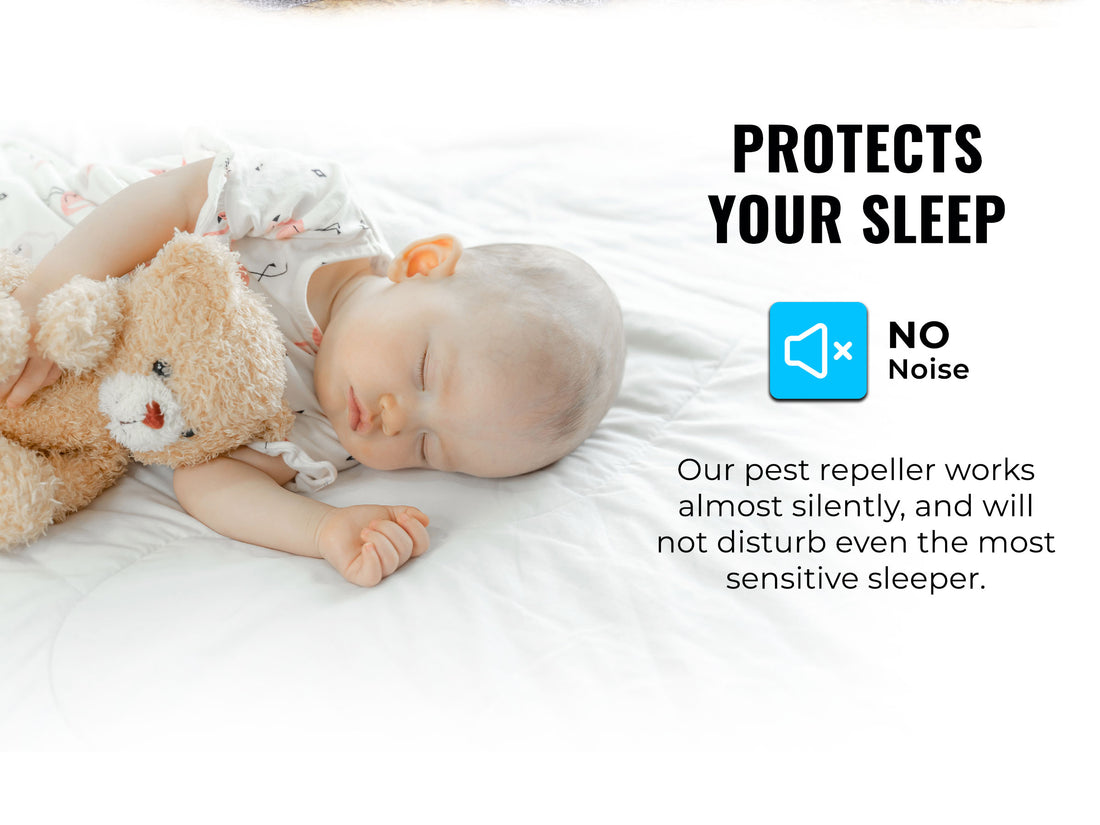Ultrasonic pest repellers have gained popularity as a non-toxic and eco-friendly solution for keeping unwanted pests at bay. These devices emit high-frequency sound waves that are intended to repel insects, rodents, and other pests without causing harm to humans or pets. In this blog, we'll explore the science behind ultrasonic pest repellers, their effectiveness, and some tips on how to use them effectively.
The Science of Ultrasonic Pest Repellers
Ultrasonic pest repellers operate on a relatively simple principle. They emit high-frequency sound waves (typically in the ultrasonic range, beyond the range of human hearing) that are unpleasant to pests. These sound waves are designed to interfere with the pests' communication, navigation, and feeding patterns, causing discomfort and driving them away from the area where the device is placed.
-
Frequency: The effectiveness of ultrasonic pest repellers largely depends on the frequency of the emitted sound. Different pests may be sensitive to different frequencies, so it's crucial to choose a device that covers a wide spectrum of frequencies to target a variety of pests effectively.
-
Coverage Area: Most ultrasonic pest repellers are designed to cover a specific area, usually measured in square feet. It's essential to select a device with appropriate coverage for the size of the area you want to protect. Multiple devices may be necessary for larger spaces.
Effectiveness of Ultrasonic Pest Repellers
The effectiveness of ultrasonic pest repellers is a subject of debate among experts and users. Some studies and anecdotal evidence suggest that these devices can be useful in repelling pests, while others claim their effectiveness is limited. Here are some key points to consider:
-
Pest Type: Ultrasonic repellers are generally more effective against insects and small rodents like mice, rats, and squirrels. Larger pests like raccoons or squirrels may not be as affected.
-
Placement: Proper placement of the device is crucial. Ultrasonic waves don't penetrate walls or solid objects, so the repeller should be installed in a clear line of sight between the device and the pests.
-
Consistency: Ultrasonic repellers must be on continuously to maintain their effectiveness. Turning them off and on can reduce their impact.
-
Initial Increase in Activity: Some users report an initial increase in pest activity as the animals are disturbed by the ultrasonic waves before they ultimately decide to leave the area.
-
Mixed Results: Ultrasonic pest repellers may not provide a 100% guarantee against all pests. They are often more effective when used in conjunction with other pest control methods, such as proper sanitation and sealing entry points.
Tips for Using Ultrasonic Pest Repellers
To maximize the effectiveness of ultrasonic pest repellers, consider the following tips:
-
Identify the pest: Determine the type of pest you want to repel, as different repellers may work better for specific pests.
-
Multiple devices: Use multiple devices if you have a large area to protect, or if you're dealing with a variety of pests.
-
Consistency: Keep the devices on continuously to maintain their effectiveness.
-
Regular maintenance: Clean and maintain the devices as per the manufacturer's instructions to ensure they work optimally.
-
Combine methods: Use ultrasonic repellers in combination with other pest control methods for best results.
Conclusion
Ultrasonic pest repellers are a popular alternative to traditional pest control methods, and their effectiveness can vary depending on several factors. While they may not be a one-size-fits-all solution, they can be a valuable tool in your pest control arsenal when used in the right context. Understanding the science behind ultrasonic pest repellers and using them correctly can help you maintain a pest-free environment in a non-toxic and eco-friendly way.
